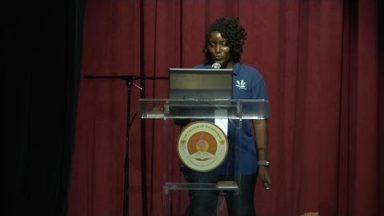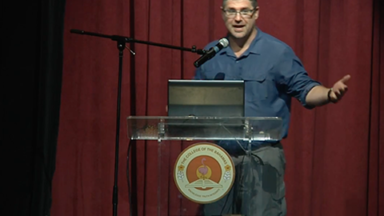Movement Patterns of West Indian Manatees (Trichechus manatus) in The Bahamas
Presented by Felice Knowles
Felice Knowles, Diane Claridge, James Reid, and Cathy Beck
The Bahamas Marine Mammal Research Organisation (BMMRO) and the U.S. Geological Survey/Sirenia Project (USGS) have been monitoring the occurrence and health of West Indian manatees (Trichechus manatus) in The Bahamas for over fifteen years. Historic evidence of manatees in The Bahamas is limited to only two sightings from 1904 and 1975, suggesting The Bahamas has not had a persistent manatee population. However, manatee sightings increased significantly during the 1990’s commensurate with the increase in the Florida manatee population, greater public awareness, and reporting of sightings to local environmental organisations, such as BMMRO. Through the use of photo-identification and the location and timing of sightings, at least fifteen individual manatees are currently known to inhabit The Bahamas, three of which had previous sighting histories in Florida. Three (Rita, Georgie, and Gina) were periodically radio-tagged to document their movements and habitat use patterns. Tracking and photo-identification data show persistent local resource use and occasional long-distance, deep-ocean movements between islands. Rita and Georgie, tagged as a mother-calf pair, were observed negotiating local habitats, making repeated moves from the Berry Islands to Andros Island. Post-weaning, Georgie left the Berry Islands and twice traveled across the deep waters of the Great Bahama Canyon to Abaco Island (minimum distance of 50km). Gina resided in the northern Berry Islands for fourteen years, and then arrived in Eleuthera in 2014 (100km away) where she was tracked among nearshore habitats and making two, possibly exploratory movements 30km offshore into waters with depths greater than 4,000m. An adult male, Blackbeard, has been photo-documented at Long, Cat, Eleuthera, and New Providence islands, with some repeated trips among these islands. Photo-identification and radio-tracking of individual manatees in The Bahamas have provided insights in the navigational capabilities of individuals to occupy large home ranges, negotiate repeated long distance moves and survive deep-water crossings.







Recent Comments